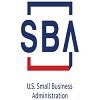An Overlooked Generic Drug Pathway: 505(b)(2)
07/19/2019
Category: Regulatory
Traditionally the generic drug makers submitted Abbreviated New Drug Applications (ANDA), however more have been opting for the 505(b)(2) regulatory pathway. The ANDA offers a quicker and more cost-efficient solution than their brand name counterpart, which was approved under a New Drug Application (NDA). ANDA allows the sponsor to demonstrate the “sameness” requirement to the FDA without the hassle of pre-clinical and clinical studies. The FDA will approve ANDAs if the generic drug and brand drug are identical in the following criteria:
- Dosage strength
- Active ingredient
- Dosage form
- Route of administration
The 505(b)(2) is a hybrid of the 505(b)(1) and ANDA applications. Although ANDA has clear benefits, the non-traditional NDA 505(b)(2) has its own unique advantages such as modifications, market exclusivity, and short pathway to market.
Modifications
Similar to the ANDA, the 505(b)(2) is able to utilize the approved brand drug’s NDA 505(b)(1) for the required safety and efficacy data. However, unlike the ANDA, the “sameness” requirement is not used for the 505(b)(2). This benefit allows the sponsor to modify the drug’s route of administration, dosage form, and dosage strength. This flexibility in modifications is not available for ANDAs. Although the 505(b)(2) pathway is more expensive than the ANDA, it is still much less than a traditional NDA and leads to additional benefits which will more than make up for the added costs. A pharmaceutical consulting firm will advise drug makers of the benefits for modifying brand name drugs instead of creating a generic replica, especially if their client is looking to do the following:
- New indications
- Faster acting dosage
- Combination of two active ingredients
- Rx-to-OTC switch
Market Exclusivity
Pharmaceutical companies have benefited from the market exclusivity of brand name drugs, where generic drugs do not receive such benefit. However, once a drug maker decides to slightly modify a brand drug, the FDA considers it a new drug and offers market exclusivity ranging from three to seven years. Pharmaceutical consulting experts often analyze the effects of market exclusivity, and generally determine that the extra expense of the 505(b)(2) pathway is the most cost effective.
Short Pathway to Market
Overall, the 505(b)(2) pathway is longer than the ANDA submission but much quicker than a traditional NDA 505(b)(1). The 505(b)(2) offers the sponsor the ability to provide a partial analysis to prove safety and efficacy, where NDAs require full pre-clinical and clinical studies. This short cut allows the drug developer to get their product to market much faster. Pharmaceutical consulting experts will agree that generic drug makers should keep their drug channels strong by taking advantage of the shorter pathway to market which results in more competing drugs and balance to drug prices.
The 505(b)(2) application has historically been overlooked for bringing generic drugs to the market. Drug makers should determine if the 505(b)(2) pathway is the right submission for their generic drug. While not all generic drugs are a good fit for the 505(b)(2) pathway due to formulation and viability issues, it may be beneficial to work with a pharmaceutical consulting firm that has the expertise in FDA drug submissions. Pharmaceutical developers may find the returns from market exclusivity may be more than enough to offset the additional expenses of the 505(b)(2).
Author Information
Christina Sanchez Miller, MPH has over 20 years of management, biologics, quality assurance and research experience in the medical field. She is a published author in scientific books, papers and has presented at several international conferences. Christina has developed medical applications in the biologics field. Her experience includes operations and consulting in FDA Adverse Event Reporting, FDA Product Deviation Reporting, FDA 483s, cGTPs, infection control, certified ISO Class 5, 7, 8 development and maintenance, QIC and auditing.
BRG is a global scientific & regulatory consulting firm with extensive experience in the strategic development of drug products, biologics, medical devices, combination products and in FDA regulatory affairs. BRG is a pharmaceutical consulting firm focusing on ANDAs, INDs, and NDAs. The opinions and statements in this blog are those of the authors and do not necessarily reflect those of BRG. This blog is based on personal experience and reviews of information publicly available or identified in other database searches.
tagging: 505(b)(2) > 505b2 FDA > NDA 505(b)(2)


